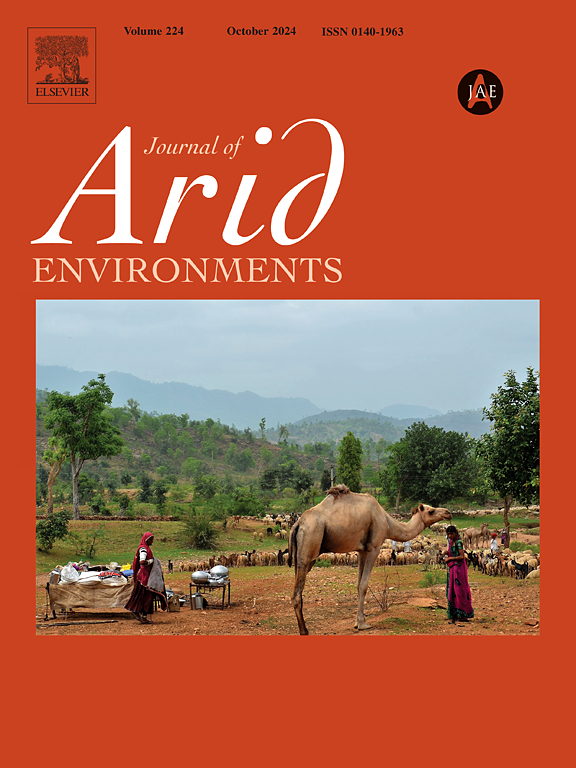利用农业生物多样性促进地中海旱地温室集约化农业的可持续转型
IF 2.6
3区 环境科学与生态学
Q2 ECOLOGY
引用次数: 0
摘要
干旱地区占地球陆地面积的40%以上,养活着全球约三分之一的人口,并且由于气候变化和其他全球变化的驱动因素,干旱地区正在不断扩大。为了克服农业发展的恶劣条件和维持粮食安全,干旱地区采用了集约化农业做法,特别是以温室为基础的依赖地下水的园艺。西班牙东南部Almería的南部沿海平原是整个欧洲大陆最干旱的地区,拥有世界上第二大温室,是这种农业模式的典范。自20世纪60年代以来,Almería的温室园艺一直被认为是成功的典范,生产了数百万种新鲜农产品,为经济繁荣和社会结构做出了贡献,并适应了日益增长的质量和安全要求。然而,曾经被誉为“Almería经济奇迹”的中国目前正面临着社会经济崩溃和环境枯竭的迹象,这主要是由于自然资源,特别是水、沙和土壤的枯竭,废物管理的挑战,如塑料和生物质,以及对(农业)生物多样性的重大威胁。我们在这里探讨了Almería农业模式向基于利用农业生物多样性促进作物多样化的更可持续范式的可能转变。基于多年生木本作物物种的农林业系统可能具有高附加值,对全球变化驱动的变化和压力条件具有适应性,并具有退化土地生态恢复的潜力。我们相信Almería是一个理想的“实验室”,可以提出一种协调粮食安全和环境可持续性的新农业模式。本文章由计算机程序翻译,如有差异,请以英文原文为准。
Leveraging agrobiodiversity for sustainable transition in greenhouse-based intensive agriculture across Mediterranean drylands
Dryland regions cover more than 40% of Earth's land, support around one-third of the global population, and are continuously expanding because of Climate Change and other drivers of Global Change. To overcome the harsh conditions for agriculture development and sustain food security, dryland regions have adopted intensive agricultural practices, notably greenhouse-based groundwater-dependent horticulture. The southern coastal plains of Almería, SE Spain, the driest region of the entire European continent, exemplifies this agricultural model by hosting the second largest concentration of greenhouses in the world. Since its origin in the 1960's, greenhouse horticulture in Almería has been considered a model of success, producing millions of fresh produce, contributing to the economic prosperity and social structuring, and adapting to the growing requirements of quality and safety. However, the once-celebrated "Almería's economic miracle" is currently facing signs of socioeconomic collapse and environmental exhaustion, driven by the depletion of natural resources, especially water, sand and soil, waste management challenges, e.g., plastic and biomass, and significant threats to (agro)biodiversity. We explore here a possible transition in Almería's agricultural model towards a more sustainable paradigm based on leveraging agrobiodiversity for crop diversification. This tentative model will be supported by agroforestry systems based on perennial woody crop species, which may offer high added value, adaptability to the changing and stressful conditions driven by Global Change, and potential for ecological restoration of degraded lands. We believe Almería is positioned as an ideal “laboratory” for proposing a new agricultural model that reconcile food security and environmental sustainability.
求助全文
通过发布文献求助,成功后即可免费获取论文全文。
去求助
来源期刊

Journal of Arid Environments
环境科学-环境科学
CiteScore
5.70
自引率
3.70%
发文量
144
审稿时长
55 days
期刊介绍:
The Journal of Arid Environments is an international journal publishing original scientific and technical research articles on physical, biological and cultural aspects of arid, semi-arid, and desert environments. As a forum of multi-disciplinary and interdisciplinary dialogue it addresses research on all aspects of arid environments and their past, present and future use.
 求助内容:
求助内容: 应助结果提醒方式:
应助结果提醒方式:


